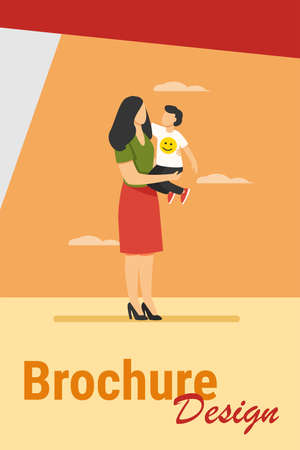1. The Basics: What Is a Booster Seat?
As a dad who’s gone through the car seat journey more than once, I know how confusing all the options and stages can be. So let’s break it down in plain English: a booster seat is the next step for your child after they’ve outgrown their forward-facing car seat with a harness. In the US, booster seats are designed to “boost” your child up so that the car’s regular seat belt fits them correctly—across their chest and hips, not their neck or stomach. This is super important because adult seat belts aren’t made for little bodies, and using one too soon can actually put your child at risk in a crash. A booster seat helps bridge that gap safely until your kid is big enough (usually around 4’9” tall and between 8–12 years old) to use just the seat belt alone. Think of it as a safety upgrade: when your child has outgrown their harnessed car seat but isn’t quite ready for the adult seat belt, the booster is there to keep them protected on every ride.
2. When Is Your Child Ready for a Booster Seat?
As a dad, I know how fast kids seem to grow—and how confusing all those car seat rules can get. So, when exactly is your child ready to move from their forward-facing car seat to a booster? Let’s break it down using key guidelines, common age and size milestones here in the U.S., and some real-life tips to help you decide with confidence.
Understanding the Basics
Most experts, including the American Academy of Pediatrics (AAP) and the National Highway Traffic Safety Administration (NHTSA), agree that children should stay in their forward-facing car seat with a harness as long as possible. Only after they outgrow it by height or weight should you consider a booster seat. But what does “outgrow” really mean? Here’s a quick reference:
| Milestone | Typical Requirement | Notes |
|---|---|---|
| Minimum Age | 4 years old | Some states require 5+; check local laws |
| Minimum Weight | 40 lbs (18 kg) | Most booster seats start at this weight |
| Minimum Height | At least 40 inches (102 cm) | Child’s ears below top of vehicle seat or headrest |
State Laws vs. Expert Recommendations
Every state has its own laws about car seats and boosters. Some states specify ages (like up to 8 years old), while others focus on height or weight. It’s smart to double-check your state’s requirements—here’s a practical resource: the Governors Highway Safety Association website.
Expert Tip:
The AAP says kids should use a harnessed seat as long as they fit—don’t rush just because your child hits the minimums! If they still fit in their forward-facing seat by height and weight, stick with it.
Is My Child Really Ready? Practical Checks for Parents
- Sits Still: Can your child sit upright and not wiggle out of position during every ride?
- Belt Fit: The vehicle lap belt should lie flat across the upper thighs (not the belly), and the shoulder belt should cross the chest and shoulder—not the neck or face.
- No Slouching: Your child’s back should be against the seatback, knees bent comfortably at the edge of the seat.
- Maturity Matters: If your child can’t keep proper posture every time, stick with a harnessed seat longer.
Dads’ Real-World Advice:
I waited until my daughter could reliably sit still and follow “car rules.” Trust your gut—but always put safety first and check both your booster seat’s instructions and your car manual. When in doubt, ask your pediatrician or local car seat safety technician for help!

3. Types of Booster Seats: High-Back vs. Backless
When it comes to booster seats, parents in the U.S. usually have two main options: high-back and backless models. Both styles help position your child so that the seat belt fits safely, but they each come with unique benefits and drawbacks. Let’s break down what makes each type different, and which might be the best fit for your family’s lifestyle and car setup.
High-Back Booster Seats
High-back boosters offer extra head and neck support thanks to their built-in sides and cushioned backs. They’re a great pick if your vehicle lacks adjustable headrests or if you do a lot of long road trips where your child might want to nap comfortably. The higher sides also provide some side-impact protection, which is an added safety bonus.
Pros: Enhanced head/neck support, side-impact protection, helps keep kids sitting upright
Cons: Bulkier, takes up more room in the back seat, usually pricier than backless models
When High-Back Boosters Make Sense
If your child is on the smaller side, tends to slump when sleeping, or you drive an SUV or sedan without tall seat backs, a high-back booster is probably your safest bet. These are often recommended as the first step after a harnessed car seat.
Backless Booster Seats
Backless boosters are exactly what they sound like—just a padded base that boosts your kiddo up so the car’s seat belt fits correctly across their shoulder and lap. They’re lightweight and easy to move between vehicles, making them super practical for carpooling or travel.
Pros: Lightweight, portable, generally more affordable
Cons: No head or side support, not suitable for cars with low seat backs or no headrests
When Backless Boosters Are Best
If your vehicle has proper headrests and your child can sit upright without slouching (even when snoozing), a backless booster can be a convenient choice—especially for older kids who are ready for something less “baby-ish.”
The Bottom Line
No matter which style you choose, always check that the booster positions the seat belt correctly over your child’s shoulder and lap. It’s all about finding what works best for both safety and comfort as your kid grows—and as every busy American family knows, flexibility is key!
4. How to Safely Install and Use a Booster Seat
Making the switch from a car seat to a booster seat is an important step in keeping your child safe on the road. Here’s a practical, step-by-step guide for American families on how to properly install and use a booster seat, along with some handy tips that I’ve picked up as a dad.
Step-by-Step Instructions
- Read Your Manuals: Before doing anything, check both your vehicle owner’s manual and the booster seat manual. US vehicles often have specific instructions for child safety seats—dont skip this step!
- Choose the Right Spot: The safest place for any child restraint system is the back seat. If you have multiple kids, try to position the booster in the middle if there’s a proper belt fit.
- Place the Booster Seat: Set the booster flat on the vehicle seat. Make sure it sits flush without wobbling or sliding around.
- Buckle Up Properly: Booster seats are designed for use with your car’s lap and shoulder belt (never just a lap belt). Thread the seat belt through the guides or slots as shown in the booster seat instructions.
- Check Belt Positioning: The lap belt should rest low across your child’s upper thighs—not their stomach. The shoulder belt should cross their chest and shoulder, not their neck or face.
- Secure the Booster: While most boosters don’t anchor to the car, some high-back models may have LATCH connectors. Always follow manufacturer guidance.
- Test for Movement: Give the booster seat a gentle shake at the base. It should stay firmly in place and not slide side-to-side.
- Teach Your Child: Remind them not to tuck the shoulder belt under their arm or behind their back, which can be tempting but unsafe.
Helpful US Terminology & Tips
| Term | Description / Tip |
|---|---|
| LATCH System | Lower Anchors and Tethers for Children; used for car seats but less common in boosters. |
| Belt-Positioning Booster | A booster that positions your child so your cars seat belt fits correctly. |
| No-Back vs High-Back Booster | No-back is best for cars with headrests; high-back provides extra support and can help with proper belt placement. |
| Buckle Crunch | A situation where the vehicle buckle rests against the hard plastic of the booster—try to avoid this by adjusting seating position if needed. |
| Belt Path | The route where you thread your vehicle’s seatbelt through or around the booster as per instructions. |
Quick Dad-to-Dad Tips:
- If your kiddo falls asleep, check that they haven’t slumped forward or sideways—this can mess up belt positioning.
- If you’re using a high-back booster, make sure it sits flush against your vehicle seat back and doesn’t lean forward due to headrest interference.
- Double-check after playdates or carpools—sometimes other kids “helpfully” move things around!
Your childs safety comes first, so take your time installing and always double-check before hitting the road. Trust me—peace of mind is worth those extra few minutes!
5. Common Mistakes and How to Avoid Them
As a dad whos made his share of rookie mistakes, I know firsthand how easy it is to slip up during the booster seat transition. Here’s a practical look at the most common errors parents make and some straightforward tips to keep your kids safe—and stay on the right side of the law.
Moving Up Too Soon
One of the biggest mistakes is graduating your child from a car seat to a booster before theyre truly ready. The excitement to see your kid “grow up” can make us jump the gun, but remember: safety trumps convenience. Always follow your state’s guidelines for height, weight, and age. When in doubt, keep them in their current seat longer—its safer.
Improper Booster Seat Installation
Let’s face it—sometimes we’re in a rush and just plop the booster down without double-checking. But an improperly installed seat can be dangerous. Take a few extra minutes to ensure the booster is flat on the vehicle seat and doesn’t slide around. Consult your car and booster manuals; each model might have unique requirements.
Poor Belt Positioning
If you’ve ever seen a seatbelt riding across a kid’s neck or stomach, you know this one’s important. The lap belt should sit low across the hips, not the belly. The shoulder belt must cross the chest and shoulder—not under the arm or behind their back. Teach your kids what proper belt positioning feels like every ride until it becomes second nature for both of you.
Skipping State Laws
Laws vary by state, but they exist for good reason: keeping kids safe. Don’t assume what works for your neighbor in another state will fly at home. Look up your local booster seat laws, especially before road trips that cross state lines, and make sure you’re always compliant.
Neglecting Regular Checks
Kids grow fast—sometimes overnight! Make it a habit to check if your child still fits their booster properly every couple of months. If friends or family drive your kids occasionally, double-check their setup too. Consistency is key.
The Bottom Line
Transitioning to a booster isn’t just about age or hitting a magic number—it’s about doing things safely and correctly every time. Avoid these common pitfalls with some simple double-checks and ongoing conversations with your kids about car safety. As parents, our job isn’t done once they’re buckled in; we’ve got to make sure it’s done right, every single trip.
6. When Can Kids Stop Using a Booster Seat?
As dads, we all look forward to the day when our kids are “big enough” to ditch the booster seat, but it’s not just about age or height—it’s about safety and following the law. In the United States, each state has its own legal requirements for when children can stop using booster seats and switch to using the regular seat belt alone. But even after meeting those legal standards, best practices suggest keeping your child in a booster seat until they truly fit the adult seat belt correctly.
Understanding American Legal Standards
Most states require children to ride in a booster until they are at least 8 years old or reach a certain height (often 4’9”, or 57 inches). Some states also have weight requirements. It’s crucial to check your specific state’s laws—resources like the Insurance Institute for Highway Safety and your state’s Department of Motor Vehicles provide up-to-date guidelines.
The Five-Step Test: Real-World Checkpoints
Legal minimums are one thing, but safety experts recommend the “Five-Step Test” before letting your child go booster-free:
1. Does your child sit all the way back against the vehicle seat?
2. Do their knees bend naturally at the edge of the seat?
3. Does the lap belt lie flat across their upper thighs (not stomach)?
4. Does the shoulder belt cross their chest and shoulder (not neck or face)?
5. Can your child stay seated like this for the whole ride?
If you answered “no” to any of these, your kiddo probably still needs that booster. Many kids don’t fit adult belts safely until they’re 10–12 years old.
Best Practices Beyond State Law
Even if your child meets your state’s legal minimum, it’s best to keep them in a booster until they pass the Five-Step Test in every car they ride in—not just yours. Cars are different and seat geometry matters!
Resources for Parents
If you’re unsure, local police stations, fire departments, and children’s hospitals often offer free car seat safety checks. You can also find certified Child Passenger Safety Technicians (CPSTs) through Safe Kids Worldwide.
Graduating from a booster is a big milestone for your child—and peace of mind for you as a parent. Take your time with this transition; their safety is always worth it.


